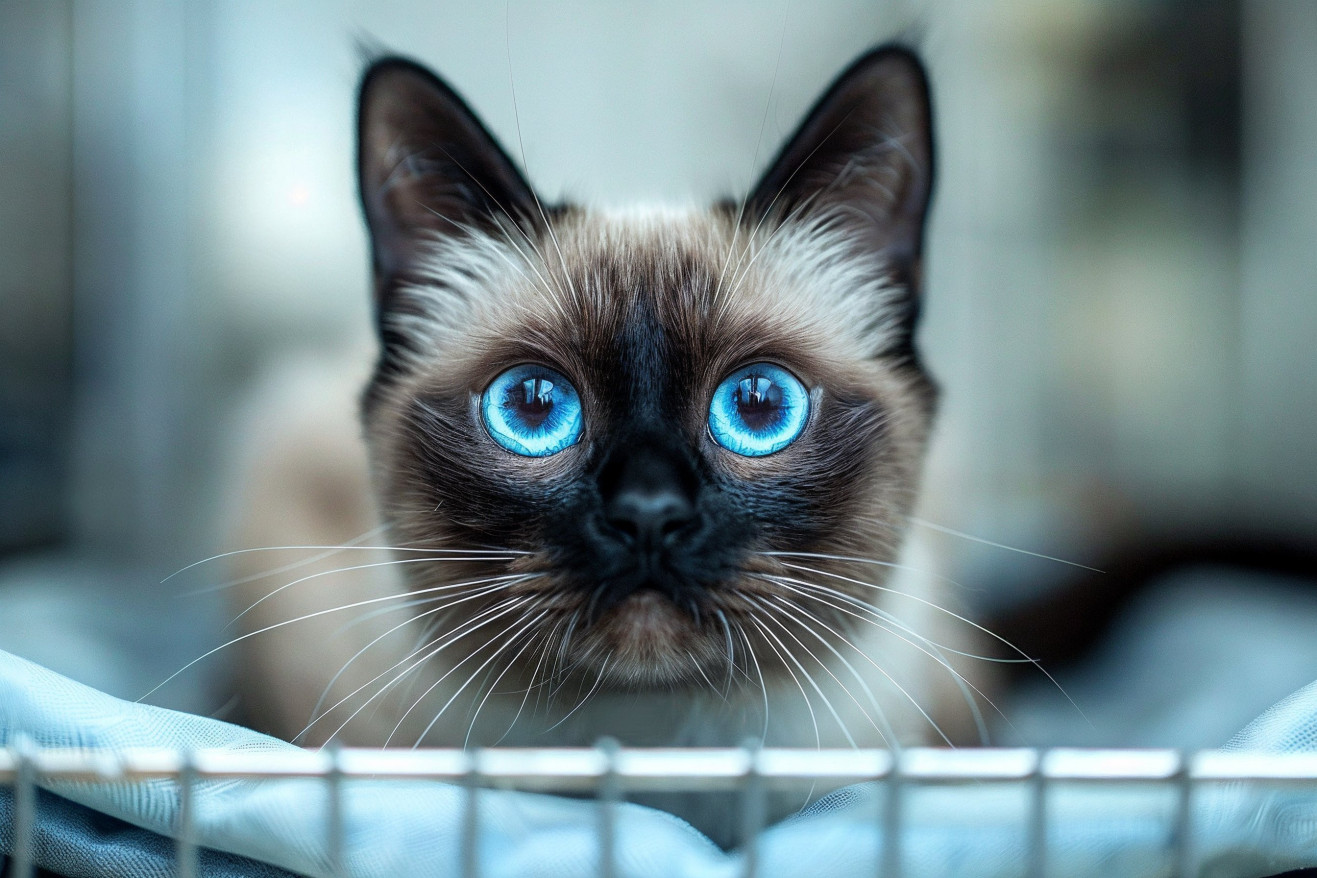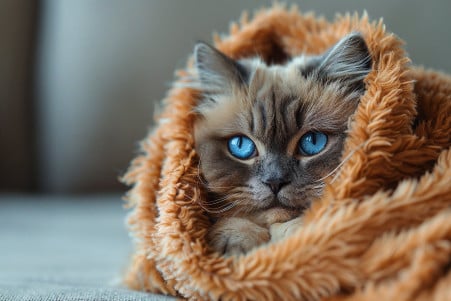Can Cats Get Strep Throat? A Veterinary Investigation
27 April 2024 • Updated 27 April 2024

Believe it or not, cats can get strep throat, a bacterial infection that leads to a sore throat and fever, just like people. Cats are most likely to get strep throat from other cats and contaminated surfaces. Although it's not very common, cats with strep throat need to be treated with antibiotics by a vet to avoid potentially life-threatening complications.
We will explore veterinary studies that have investigated the prevalence, clinical signs, and modes of transmission of strep throat in cats. This scholarly research will help you better understand how to prevent your cat from getting this condition and dispel myths about cats and streptococcal infections. You will also learn how to recognize the signs of strep throat in cats and make sure your pet gets the care they need.
Can cats get strep throat?
Streptococcal Species and Their Impact on Feline Health
Streptococcus canis is a commensal bacterium that is commonly found in the oral cavity, respiratory tract, and reproductive tract of cats. However, it can also be pathogenic and cause a variety of infections including respiratory disease, abscesses, pneumonia, bone and joint infections, urogenital infections, septicemia, sinusitis, and meningitis. Infections are more common in older cats and in cats that live in group settings such as shelters and breeding catteries.
Another important pathogen in cats is Streptococcus equi subspecies zooepidemicus, which is a highly contagious pathogen that is primarily associated with respiratory disease and can cause severe and life-threatening diseases such as bronchopneumonia, pneumonia, and meningoencephalitis. Horses are a common source of the bacteria, so exposure to horses is a risk factor. Cats that live in group settings such as shelters, research facilities, and breeding catteries are also at increased risk.
Early diagnosis using bacterial culture from respiratory samples or PCR testing is important, as is early treatment with antibiotics to prevent complications such as respiratory distress, neurological symptoms, and sepsis. Cats that live in group settings should be closely monitored for these serious streptococcal infections.
Clinical Signs and Diagnosis of Streptococcal Infections
Clinical signs of streptococcal infections in cats are varied and can include fever, lethargy, coughing, dysphagia, and lymphadenopathy. Per PetMD, respiratory signs such as pneumonia, sinusitis, and tonsillitis are most common, but skin signs such as abscesses and arthritis are also seen. In more severe cases, neurological signs such as meningitis and septicemia (blood poisoning) can also be seen.
Diagnosis is typically made by isolating the bacteria from nasal, pharyngeal, or lung samples using culture or PCR testing. WagWalking explains that early recognition of clinical signs and rapid diagnostic testing is important to ensure that appropriate treatment is started and complications are avoided.
How to Treat and Manage Streptococcal Infections in Cats
The main treatment for streptococcal infections in cats is broad-spectrum antibiotics, which are often given intravenously in severe cases. WagWalking explains that it's important to start early intervention with broad-spectrum antibiotics that contain a gram negative spectrum aimed at secondary infections as soon as the infection is suspected. The antibiotics should be adjusted based on the clinical response.
Supportive care, such as fluid therapy and oxygen supplementation, may be needed for respiratory complications or septicemia. The WSAVA 2017 Congress states that aggressive fluid resuscitation with crystalloids and blood products may be necessary in severe cases.
Proper hygiene and disinfection of the cat's environment are important to prevent the spread of infection, especially in multi-cat households or shelters. WagWalking explains that repeated and regular use of household bleach-based products is recommended, as well as products that contain detergents like Virkon® and accelerated hydrogen peroxide, which have been shown to be effective at inactivating the pathogen. Quaternary ammonium cleansing is also effective.
In shelter or cattery settings, it's important to isolate infected cats and follow strict quarantine protocols to prevent the spread of infection. WagWalking explains that isolation of the affected feline from the healthy population is important for prevention of spreading, and in-cage containment or removal to a separate room is valuable.
In some cases, it may be important to monitor for potential antibiotic resistance and adjust treatment plans accordingly. The WSAVA 2017 Congress explains that restricted and appropriate antimicrobial use can help prevent resistant enterococcal infections.
Zoonotic Potential: Can Streptococcal Infections Spread from Cats to Humans?
Although it is uncommon, there have been reports of people contracting streptococcal infections, including group A streptococcus (the bacteria that causes strep throat), from cats. According to a case report, group A β-hemolytic streptococci (GABHS) was isolated from the wound of a patient as well as the oral cavity and claws of the cat that caused the scratch.
In general, transmission of zoonotic streptococcal infections occurs through direct contact with infected cats, such as bites, scratches, or exposure to respiratory droplets. The Benicia Cat Clinic explains that cats are more likely to be infected by humans than the other way around, but it is possible for cats to contract streptococcal infections from humans and then pass them back to their owners.
People with weakened immune systems and those who work in close contact with animals are most at risk of developing zoonotic streptococcal infections. As reported in The Washington Post, a family was able to stop recurring strep throat infections after treating their cat, which was found to be carrying the same strain of group A strep.
To prevent the spread of these infections from cats to humans, it's important to practice good hygiene, including handwashing and avoiding contact with infected animals. If you suspect that you or someone you know has a zoonotic streptococcal infection, it's important to seek medical care and follow your healthcare provider's treatment recommendations.
Prevention and Biosecurity Measures of Streptococcal Infections
Practicing good hygiene, such as washing your hands and cleaning surfaces, can help prevent the spread of streptococcal infections in cats. The New York State Department of Health explains that good hand hygiene, especially after coughing and sneezing, before and after handling food, and before eating, is important in preventing the spread of all group A streptococcal infections.
It is important to isolate and quarantine infected cats, especially in multi-cat households or shelters, to prevent the spread of the infection. The ABCD Guidelines on Infectious Diseases in Shelter Situations states that isolating affected cats from the general population is important in preventing the spread of the infection.
Training shelter staff to recognize the signs of infection and how to handle potentially infected cats is important in preventing outbreaks. The ABCD Guidelines explains that care workers should be trained in zoonotic risks, clinical signs that may indicate a zoonotic risk, and how to handle potentially infected cats.
Vaccination for streptococcal infections may be considered in high-risk situations or for cats that are immunocompromised. The Government of Quebec explains that good management and hygiene, including disease control and careful introduction of new animals, are the best ways to prevent streptococcal diseases in animals.
Preventing the development of drug-resistant strains of bacteria can be done by using antibiotics responsibly and monitoring for antibiotic resistance. The WSAVA 2017 Congress explains that the responsible and appropriate use of antimicrobials is important in preventing resistant enterococcal infections in cats.
Conclusion: Protecting Feline Welfare and Preventing Streptococcal Infections
Streptococcal infections, especially those caused by Streptococcus canis and Streptococcus equi subspecies zooepidemicus, can be dangerous to cats. Early detection of clinical signs, accurate diagnosis, and timely antibiotic therapy are important for successful treatment and prevention of complications. Good hygiene, disinfection, and biosecurity practices, especially in multi-cat settings, are important for preventing the spread of these infections.
Knowledge of the potential for zoonotic transmission and appropriate precautions can help prevent disease in both cats and people. More research and monitoring are necessary to address the growing problem of streptococcal infections in cats and to develop effective prevention and control strategies.


